Visit to the Danish ecovillage Munkesoegaard
Basic info about the project:
The village was founded in 1995 and is designed to provide diversity in terms of the size of individual houses, ownership structure and support for different age groups.
The village has a total of 100 terraced houses with more than 200 inhabitants. The community is divided into five individual parts, each with 20 houses and its own common areas.
Ownership is designed so that one part is directly owned by the inhabitants of the village (individual houses). The second part is a community of owners (residents own the whole part together through the association and each individually owns a share according to the area they inhabit). The remaining three parts are rented by residents. Residents living in the rental area have limited rights within the community.
Each inhabitant is actively involved in working groups (at least two groups), one within the part in which he lives and then in a group within the whole village. Most residents commute to work and group responsibilities take a few hours a week. Workgroups can be changed.
Parts of the village are divided as follows:
- Part for young people
- Part for seniors
- The other parts are open to everyone
- The village has a committee with members from all parts of the village (only rented members have limited decision-making rights).
There is no school / education center within the village, as there are many "free" types of schooling nearby.

The whole community has one common object, an old farm, which is in the middle of the village. There is a café, a small shop with organic products, a place for bicycles, rooms for short-term rent, offices for rent, a workshop, and a place for animals.
The material of the houses is mostly wood (ecological coatings), the internal partitions are made of unfired bricks and the insulation of the house is based on shredded paper. The owners of the houses built a building for joint activities made of straw and clay.

Energy for heating is from our own small wood pellet power plant. It is used to heat water in central heating and hot water. The common areas of the individual parts have solar collectors for hot water heating (works throughout the summer). Photovoltaic panels are installed on several roofs, however most of the electricity is supplied from the grid.
The village has its own recycling center, where residents sort their waste, including a clothing recycling center. Residents' urine is recycled, drained into tanks and provided to local farmers for fertilization. Kitchen and garden waste is composted.
Household waste is led to natural sand filtration. Rainwater is drained from the common areas, which they use for washing. Each household has a separate toilet.
My personal feeling from visiting the village is very positive. Although the village is set in close proximity to the "classic" residential areas and a short distance from the local university but thanks to the greenery and layout of the village, you have no feeling that there are other residential buildings nearby.


I was in the village on the weekend. We met a lot of children playing together, a few inhabitants in the gardens and a few inhabitants as we went through the individual parts. The village has a very relaxed and friendly atmosphere, everyone stops for at least a few words.
I had the opportunity to visit the common areas of one part, where I talked to several residents. It's amazing to see how the village lives, this is how I imagine a healthy organism. Everything works smoothly, everyone is naturally responsible and aware that he is part of the whole organism and behaves accordingly.
Yes, there were a few cases where there were problems with some residents, but everything was resolved through open communication.


I heard only two cases of issues and I talked to the residents who have been in the village for more than 10 years. One of the "problem" inhabitants left the community by his own decision and the other still lives there, but they no longer "know" about him (as a problematic).
In short, the basic difference from living outside the village is not separation.
Community living is an example for a healthy society. However, the word community can be misleading because it does not have a uniform definition and even so, everyone can imagine something different. For me, the community is an example of a healthy organism, where each member is aware of their responsibility and role in the whole and thus their influence on everything else on this planet.
A visit to such a project can be an inspiration for everyone, an opportunity to see reality before we start judging based on assumptions and without our own experience.
Petr Němeček
Fotogalery:
https://drive.google.com/folderview?id=1GZqenmJK38G9sBD2fwJAREEmISG-SKE
Overview of ecovillages and communities:

